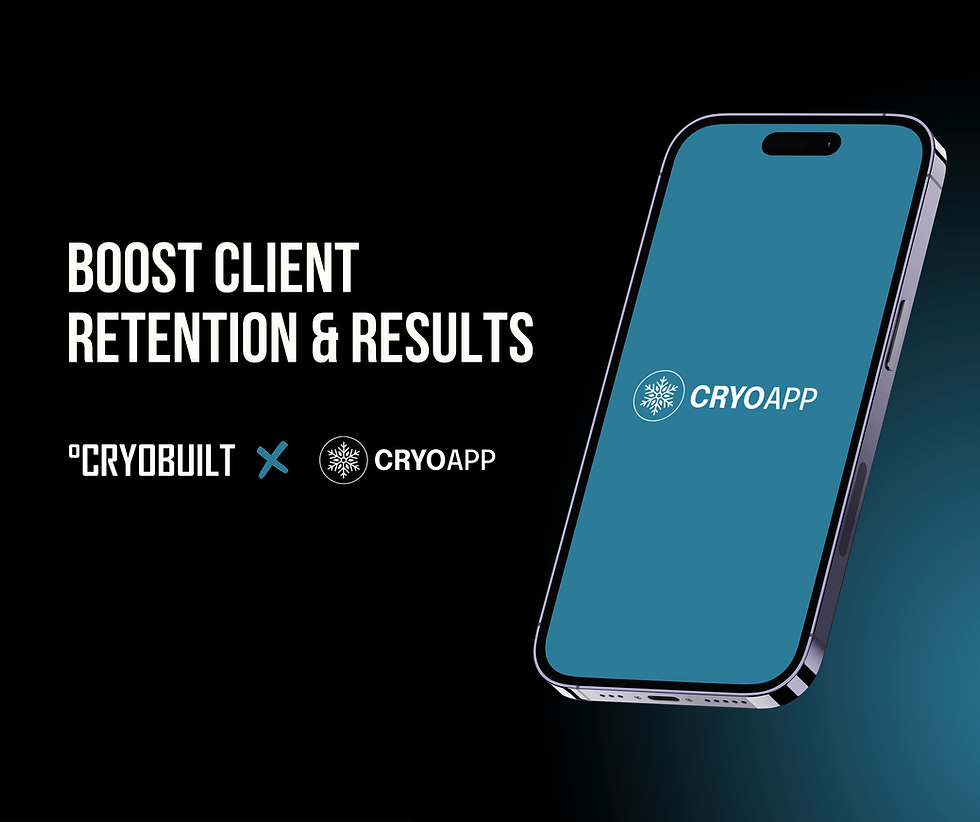Fat Cells Hate the Cold: Here’s Why
- CryoBuilt

- Sep 30
- 3 min read
Did you know fat cells hate the cold?
It might sound like a modern wellness trend, but the science actually begins with something as ordinary as a popsicle.

Popsicles and the Birth of Fat-Freezing Science
In the 1970s, pediatricians noticed something unusual: some children who sucked on popsicles for long periods developed small, shallow dimples in their cheeks. Upon closer inspection, the fat under the skin had been damaged, but the skin itself remained completely unharmed.
Doctors called this phenomenon popsicle panniculitis.
This raised an intriguing question: can cold selectively target fat while sparing surrounding tissues?
Cryolipolysis: Selectively Destroying Fat Cells
Years later, researchers confirmed the answer was yes. Fat cells (adipocytes) are more vulnerable to cold injury than skin, nerves, or muscle. This led to the development of cryolipolysis, a medical treatment designed to eliminate fat cells using controlled cooling.
How It Works:
A device applies suction and cooling to a pocket of fat (like love handles or belly fat).
Cooling temperatures (typically around 14°F to 32°C) cause crystallization inside fat cells.
This triggers apoptosis (programmed cell death).
Over several weeks, the immune system clears away these dead fat cells.
The Outcome:
Permanent reduction in subcutaneous fat in the treated area.
No damage to skin, nerves, or muscle.
Aesthetic contouring rather than whole-body metabolic effects.
Cryolipolysis = fat destruction.

Whole-Body Cryotherapy: A Completely Different Pathway
Both cryolipolysis and whole-body cryotherapy use cold, but the way they influence fat is distinct. Cryolipolysis freezes and reduces fat cells directly, while WBC activates brown fat, the type of fat that actually burns energy to keep you warm.
White Fat vs. Brown Fat:
White Fat (WAT): The body’s energy storage system. Stores excess calories as triglycerides. Too much white fat, especially visceral fat around organs, is linked to obesity, insulin resistance, and heart disease.
Brown Fat (BAT): A specialized fat loaded with mitochondria (the “power plants” of cells). Its primary role is non-shivering thermogenesis, burning energy to generate heat.
What Happens in Cryotherapy:
When the body is suddenly exposed to extreme cold (–175°F in a cryotherapy chamber), it responds by activating brown fat.
Here’s the process:
Cold receptors in the skin signal the brain to preserve core temperature.
The sympathetic nervous system releases norepinephrine, a hormone that binds to brown fat cells.
Inside brown fat, norepinephrine triggers mitochondrial uncoupling via a protein called UCP1 (uncoupling protein 1).
Instead of producing ATP (the cell’s energy currency), mitochondria in BAT release energy directly as heat.
To fuel this heat production, brown fat burns glucose and fatty acids from white fat stores.
This means cryotherapy turns fat into a furnace.
Why Brown Fat Activation Matters
Brown fat isn’t just about burning calories. It influences multiple aspects of metabolic health:
Increased Energy Expenditure → Cold-exposed humans can burn hundreds of extra calories per day through BAT activation.
Improved Insulin Sensitivity → BAT draws glucose out of the bloodstream, improving blood sugar regulation.
Enhanced Lipid Metabolism → BAT consumes fatty acids, lowering circulating triglycerides.
Metabolic Flexibility → Activating BAT trains the body to switch more easily between burning carbs and fat.
Unlike cryolipolysis, which permanently removes fat cells in one spot, cryotherapy strengthens the body’s overall metabolic engine.
Cryolipolysis vs. Cryotherapy: A Side-by-Side Comparison
Feature | Cryolipolysis | Whole-Body Cryotherapy |
Mechanism | Freezes fat cells → apoptosis → elimination | Activates brown fat → burns calories for heat |
Target | Localized fat pockets | Whole-body metabolism |
Outcome | Permanent fat reduction in treated area | Increased energy expenditure, improved metabolic health |
Goal | Aesthetic body contouring | Systemic health benefits |
Timescale | Visible changes in weeks (as fat clears) | Immediate activation of BAT, long-term benefits with repeated use |
The Bottom Line
Cold interacts with fat in two powerful, but different ways:
Cryolipolysis destroys fat cells directly, reshaping the body in specific areas.
Whole-body cryotherapy activates brown fat, boosting calorie burn, energy levels, and metabolic health.
In short, cryolipolysis works on the outside, while whole-body cryotherapy works from the inside out, supporting not just appearance, but also metabolism, recovery, and overall wellness.
The Research
Lee et al., 2014 (Diabetes Journal): Showed that temperature-acclimated BAT improved insulin sensitivity in humans, suggesting a therapeutic role for metabolic disorders.
Ravussin et al., 2014 (PLoS One): Demonstrated that intermittent cold exposure in mice activated BAT, reduced obesity, and improved energy balance.
Liu et al., 2023 (Frontiers in Endocrinology): Reviewed BAT as a key target in obesity intervention, highlighting its calorie-burning potential.
Loap & Lathe, 2018 (Journal of Obesity): Proposed cryotherapy as a practical trigger for thermogenesis and weight regulation.
Harvard Health Blog, 2020: Clarified the distinction between fat-freezing procedures and systemic cold exposure.




Comments